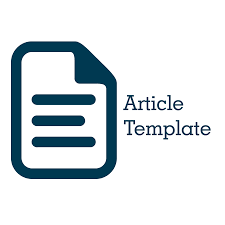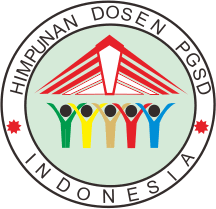Hubungan kesiapan belajar dan kesadaran metakognitif dengan scientific reasoning ability peserta didik Sekolah Dasar dalam pembelajaran IPA
Abstract
Keywords
References
S. F. Wati, J. I. Siti Poerwanti, and S. Sularmi, “Analisis keterampilan 4c (critical thinking and problem solving, communication, collaboration, creativity and innovation) dalam buku siswa kelas iv subtema aku dan cita-citaku,” Didakt. Dwija Indria, vol. 10, no. 2, pp. 46–51, 2022, doi: 10.20961/ddi.v10i2.64544. [2] M. Miterianifa, A. Ashadi, S. Saputro, and S. Suciati, “Higher Order Thinking Skills in the 21st Century: Critical Thinking,” 2021, doi: 10.4108/eai.30-11-2020.2303766. [3] S. Todorova, “21ST Century Skills In The Context Of Education,” Kult. Nasled. Opazvane, Predst. Digit., vol. 10, no. 1, pp. 101–111, 2024, doi: https://doi.org/10.55630/kinj.2024.100109. [4] M. Luo, Z. Wang, D. Sun, Z. H. Wan, and L. Zhu, “Evaluating scientific reasoning ability: The design and validation of an assessment with a focus on reasoning and the use of evidence,” J. Balt. Sci. Educ., vol. 19, no. 2, pp. 261–275, 2020, doi: 10.33225/jbse/20.19.261. [5] C. Osterhaus, X. Lin, and S. Koerber, “Measuring scientific reasoning in kindergarten and elementary school: validating the Chinese version of the Science-K Inventory,” Educ. Res. Policy Pract., 2023, doi: 10.1007/s10671-023-09332-9. [6] L. Bao, K. Koenig, Y. Xiao, J. Fritchman, S. Zhou, and C. Chen, “Theoretical model and quantitative assessment of scientific thinking and reasoning,” Phys. Rev. Phys. Educ. Res., vol. 18, no. 1, p. 10115, 2022, doi: 10.1103/PhysRevPhysEducRes.18.010115. [7] B. Köymen and M. Tomasello, “The Early Ontogeny of Reason Giving,” Child Dev. Perspect., vol. 14, no. 4, pp. 215–220, 2020, doi: 10.1111/cdep.12384. [8] R. N. Rahmawati, S. Marmoah, and H. Hadiyah, “Peran orang tua dalam kesiapan belajar peserta didik kelas I selama pembelajaran daring,” Didakt. Dwija Indria, vol. 11, no. 1, pp. 2–7, 2023, doi: 10.20961/ddi.v11i1.67408. [9] A. Shintawati, I. R. W. Atmojo, and R. Ardiansyah, “Pengaruh kesadaran metakognisi terhadap kemampuan berpikir kritis mahasiswa PGSD UNS Surakarta,” Didakt. Dwija Indria, vol. 11, no. 3, pp. 1–6, 2023, doi: 10.20961/ddi.v11i3.76819. [10] B. B. Akaydın, A. Yorulmaz, and H. Çokçalışkan, “Investigation of Primary School Students’ Metacognitive Awareness and Decision-Making Skill,” Int. J. Progress. Educ., vol. 16, no. 4, pp. 157–171, 2020, doi: 10.29329/ijpe.2020.268.10. [11] S. Sanduleac, “The role of metacognition in the development of scientific thinking in teachers,” Univers Pedagog., vol. 80, no. 4, pp. 53–62, 2023, doi: 10.52387/1811-5470.2023.4.08. [12] D. Gousopoulos, “Investigating students ’ scientific reasoning through heuristic and analytical thought processes,” 2023. [13] J. Hu, Y. Chen, C. Leng, and C. Y. Tang, “APPLIED REGRESSION ANALYSIS OF CORRELATIONS FOR CORRELATED DATA,” Ann. Appl. Stat., vol. 18, no. 1, pp. 184–198, 2024, doi: https://doi.org/10.1214/23-aoas1785. [14] J. Jung, J. Chang, and J. Park, “An Analysis of Different Grade Levels of Elementary School Students’ Reasoning about the Changes of State of Water within a Learning Progression,” Asia-Pacific Sci. Educ., vol. 6, no. 2, pp. 548–563, 2020, doi: 10.1163/23641177-bja10004. [15] S. K. William and S. M. Maat, “Understanding Students’ Metacognition in Mathematics Problem Solving: A Systematic Review,” Int. J. Acad. Res. Progress. Educ. Dev., vol. 9, no. 3, pp. 115–127, 2020, doi: 10.6007/ijarped/v9-i3/7847. [16] S. Honório, M. Batista, J. M. Folgado dos Santos, and M. Vandoni, “Editorial: Physical exercise related to student’s academic performance,” Front. Psychol., vol. 16, 2023, doi: https://doi.org/10.3389/fpsyg.2023.1220616. [17] A. L. Naj’Iyah, Viyanti, and A. Suyatna, “Learning Strategies Design to Accommodate Learning Styles, Initial Knowledge and Reduce the Differences of Scientific Reasoning and Argumentation Performance,” J. Phys. Conf. Ser., vol. 1788, no. 1, pp. 1–10, 2021, doi: 10.1088/1742-6596/1788/1/012031. [18] E. T. Agu, “BEING IN CHARGE OF ONE’S EMOTIONS: A SOLUTION TO STABLE MENTAL HEALTH,” 2024, doi: https://doi.org/10.14293/pr2199.001232.v1. [19] J. Fulgencio and T. I. Asino, “Conducting a Learner Analysis,” Des. Learn. Princ. Process. Prax., vol. 12, no. 5, pp. 89–103, 2021, [Online]. Available: https://edtechbooks.org/id/learner_analysis. [20] S. Zhao, C. Wang, and S. Sahebi, “Modeling Knowledge Acquisition from Multiple Learning Resource Types,” Proc. 13th Int. Conf. Educ. Data Mining, EDM 2020, no. Edm, pp. 313–324, 2020, doi: https://files.eric.ed.gov/fulltext/ED608013. [21] I. Mahama, K. Asamoah-Gyimah, and B. Yusuf Dramanu, “Examining the Interrelationships Among Curiosity, Creativity, and Academic Motivation Using Students in High Schools: A Multivariate Analysis Approach,” Open Educ. Stud., vol. 6, no. 1, pp. 1–13, 2024, doi: 10.1515/edu-2024-0001. [22] H. Hunaepi, I. K. Suma, and I. W. Subagia, “Curiosity in Science Learning: A Systematic Literature Review,” Int. J. Essent. Competencies Educ., vol. 3, no. 1, pp. 77–105, 2024, doi: 10.36312/ijece.v3i1.1918. [23] A. García-Carmona, “Scientific Thinking and Critical Thinking in Science Education : Two Distinct but Symbiotically Related Intellectual Processes,” Sci. Educ., vol. 34, no. 1, pp. 227–245, 2023, doi: 10.1007/s11191-023-00460-5.
Refbacks
- There are currently no refbacks.



